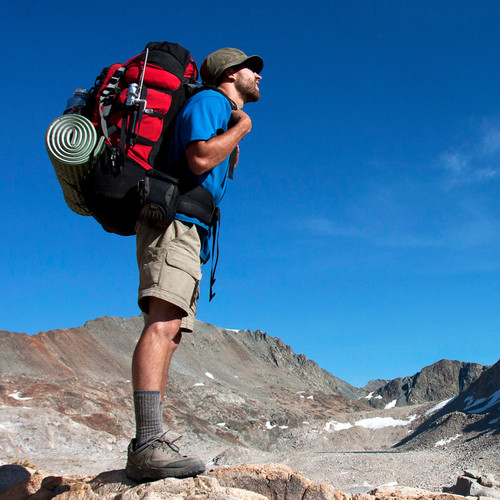Anti-Chafing Strategies for Hikers and Backpackers
Posted by Jack Miller on 29th Oct 2023
For avid hikers and backpackers, chafe can be a painful reality. As enthusiasts take on miles of trails and terrain, the friction from repetitive motion can lead to irritation or even blisters. However, with the right strategies, one can significantly reduce or eliminate this discomfort.
Understand What Causes Chafing
If you want to tackle chafing, it helps to understand what causes it. For hikers and backpackers, chafing is most likely the result of:
• Friction: Chafing primarily stems from the repetitive rubbing of skin against skin or clothing. As sweat accumulates, it exacerbates this friction, leading to the irritated skin.
• Moisture: Wet environments, either from sweat, rain, or river crossings, can increase the risk of chafing.
• Ill-fitting Clothing: Wearing clothes that don't fit properly or that bunch up can cause unwanted friction.
Choose the Right Clothing
One of the biggest causes of chafing is the wrong choice of clothing. So remember these tips when getting your outfit ready for a hike:
• Material Matters: Opt for moisture-wicking materials that draw sweat away from the body. Fabrics like merino wool or synthetic fibres designed for active use can help in keeping the skin dry.
• Fit is Key: Go for form-fitting, but not too tight, clothes that don't bunch up. For hikers, compression shorts or tights can be a great option to reduce friction.
Maintain Proper Hygiene
Another important thing to tackle in your fight against chafing is proper hygiene. Accumulating sweat over time can bring on chafing, so:
• Stay Clean: Whenever possible, clean the sweat and dirt from your body. Some hikers carry wet wipes designed for athletic use to freshen up during breaks.
• Powders and Creams: Anti-chafing creams, balms, and powders can act as a temporary protective barrier on the skin. They reduce friction and moisture, making them essential for long hikes.
Thigh Guards: A Hiker's Best Friend
Thigh guards, sometimes called thigh bands, have emerged as one of the most effective anti-chafing tools, especially for those who experience chafing between the thighs.
• How They Work: Thigh guards are stretchable bands worn around the upper thighs. They act as a physical barrier, preventing the thighs from rubbing against each other. Most are made of a blend of spandex, nylon, or silicone, ensuring they stay in place even during rigorous activities.
• Benefits: Beyond the obvious benefit of preventing chafing, thigh guards are lightweight, breathable, and discreet. Unlike creams or powders, they don't wear off or require reapplication.
• Choosing the Right Pair: When selecting thigh guards, consider the material, size, and whether they have non-slip silicone strips on the inner side. It's crucial to find a pair that fits snugly without constricting blood flow.
Stay Hydrated and Mind Your Diet
Believe it or not, what you consume affects your susceptibility to chafing. So consider the following areas when tackling chafing:
• Water Intake: Staying hydrated helps in maintaining the salt balance of your sweat. When dehydrated, your sweat becomes saltier, which can exacerbate chafing.
• Dietary Choices: Consuming excessive salt can lead to saltier sweat. Try to balance your diet and be wary of consuming too much salt before or during your hike.
Beat Chafing and Enjoy the Outdoors
Chafing rash doesn't have to be an inevitable part of hiking or backpacking. With the right strategies and tools, like the invaluable thigh guards, you can enjoy your outdoor adventures chafe-free. Happy hiking!

